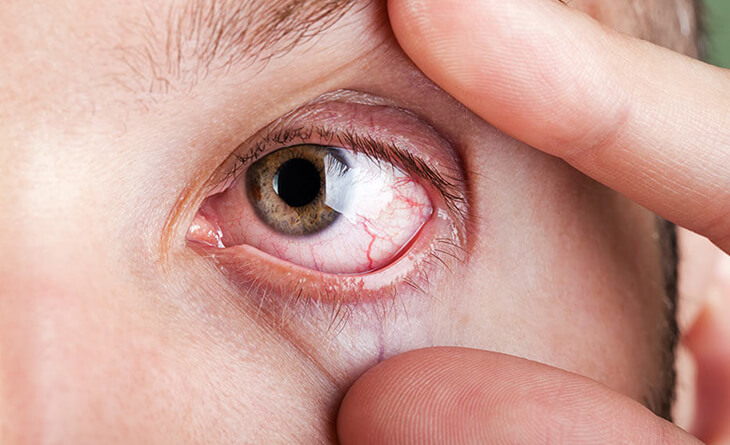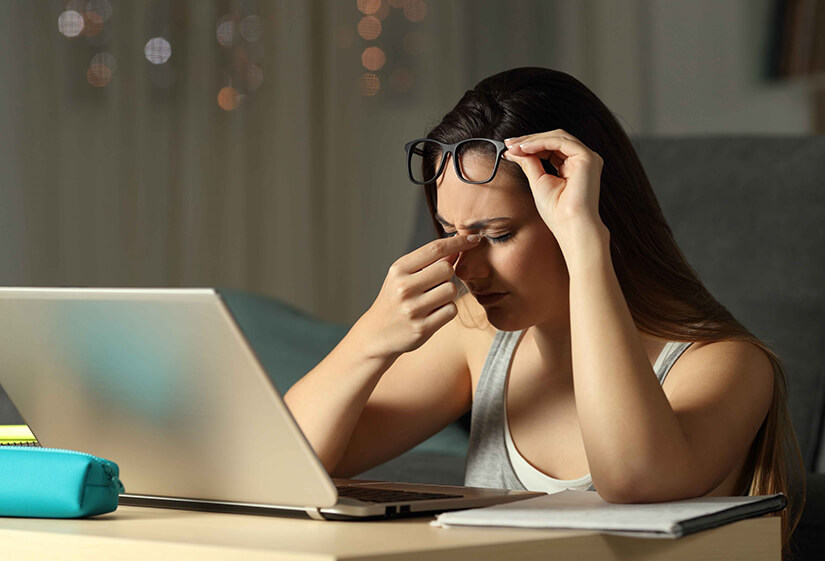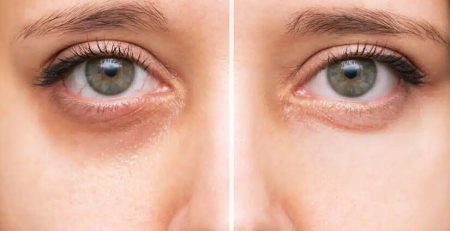Why Your Vision Blurs After Too Much Screen Time And How to Fix It?
We spend countless hours in front of screens. Whether it’s work-related tasks, catching up on social media, or streaming our favourite shows, screen time for eyes has become an inevitable part of our lives. But have you ever noticed your vision getting blurry after prolonged screen use?
If yes, keep reading this blog until the end.
Blurred vision is one of the most common symptoms of digital eye strain, also known as computer vision syndrome.
Why Does Screen Time Cause Blurred Vision?
When you stare at a screen for extended periods, your eyes are forced to focus continuously without breaks. This constant strain leads to blurred vision and other symptoms like dry eyes, headaches, and even neck pain. Additionally, the blue light emitted by screens can penetrate deep into the eye, further contributing to discomfort and making it harder to focus.
Reduced blinking is another factor. When we’re engrossed in a screen, our blink rate decreases significantly, causing dryness and irritation. Over time, this lack of moisture can lead to blurry vision and exacerbate digital eye strain.
Blurry Vision Symptoms Caused by Excessive Screen Time for Eyes
One of the most common consequences of prolonged screen use is blurry vision. Recognizing the symptoms early can help prevent long-term damage. Here are the key indicators:
- Difficulty Focusing: Extended screen use can strain the eye muscles, causing temporary difficulty in focusing, especially when switching between near and far objects.
- Frequent Headaches: Blurry vision often accompanies headaches, particularly around the temples or behind the eyes.
- Increased Sensitivity to Light: Spending hours in front of bright screens can make your eyes more sensitive to light, leading to discomfort in natural or artificial lighting.
- Eye Fatigue: Tired, sore eyes are a telltale sign of digital strain. This fatigue often worsens after a full day of screen use.

How to Fix Blurred Vision Symptoms Caused by Screen Time?
Understanding how to address this issue is essential to protect your vision and maintain comfort during screen use.
- Follow the 20-20-20 Rule: Every 20 minutes, look at an object 20 feet away for at least 20 seconds. This simple practice helps relax your eye muscles and prevents prolonged strain.
- Blink More Often: Consciously blinking while using a screen keeps your eyes lubricated and reduces dryness. Consider using artificial tears if your eyes still feel dry.
- Adjust Your Screen Settings: Reduce brightness and increase contrast to ease the strain on your eyes. Using night mode or blue light filters, especially in the evening, can also help.
- Maintain Proper Distance: Position your screen at least an arm’s length away from your eyes and ensure it’s slightly below eye level. This minimizes strain and promotes a more natural viewing angle.
- Take Regular Breaks: Step away from your screen every hour for five to ten minutes. Walk around, stretch, or simply close your eyes for a moment to give them a rest.
- Invest in Blue Light Glasses: If you spend long hours on screens especially at night, blue light-blocking glasses can reduce glare, improve sleep and overall comfort.
By making small but impactful changes to your screen habits, you can significantly reduce blurred vision and other symptoms of digital eye strain. Prioritize your eye health today to ensure clearer vision and greater comfort, even in a technology-driven world.
When to See a Doctor?
While most cases of blurred vision due to screen time for eyes can be managed with these steps, persistent symptoms may indicate an underlying issue. If you experience frequent headaches, worsening vision, or prolonged discomfort, it’s time to consult an eye specialist.
Don’t let excessive screen time affect your vision and quality of life. If you’re struggling with blurred vision symptoms or other symptoms of digital eye strain, visit Dr. Anisha Gupta at Excel Eye Hospital in Delhi. As a leading eye doctor, Dr. Gupta offers personalized care and practical solutions to protect your eyes in the digital age. Book your consultation today and take the first step toward healthier, more comfortable vision.











